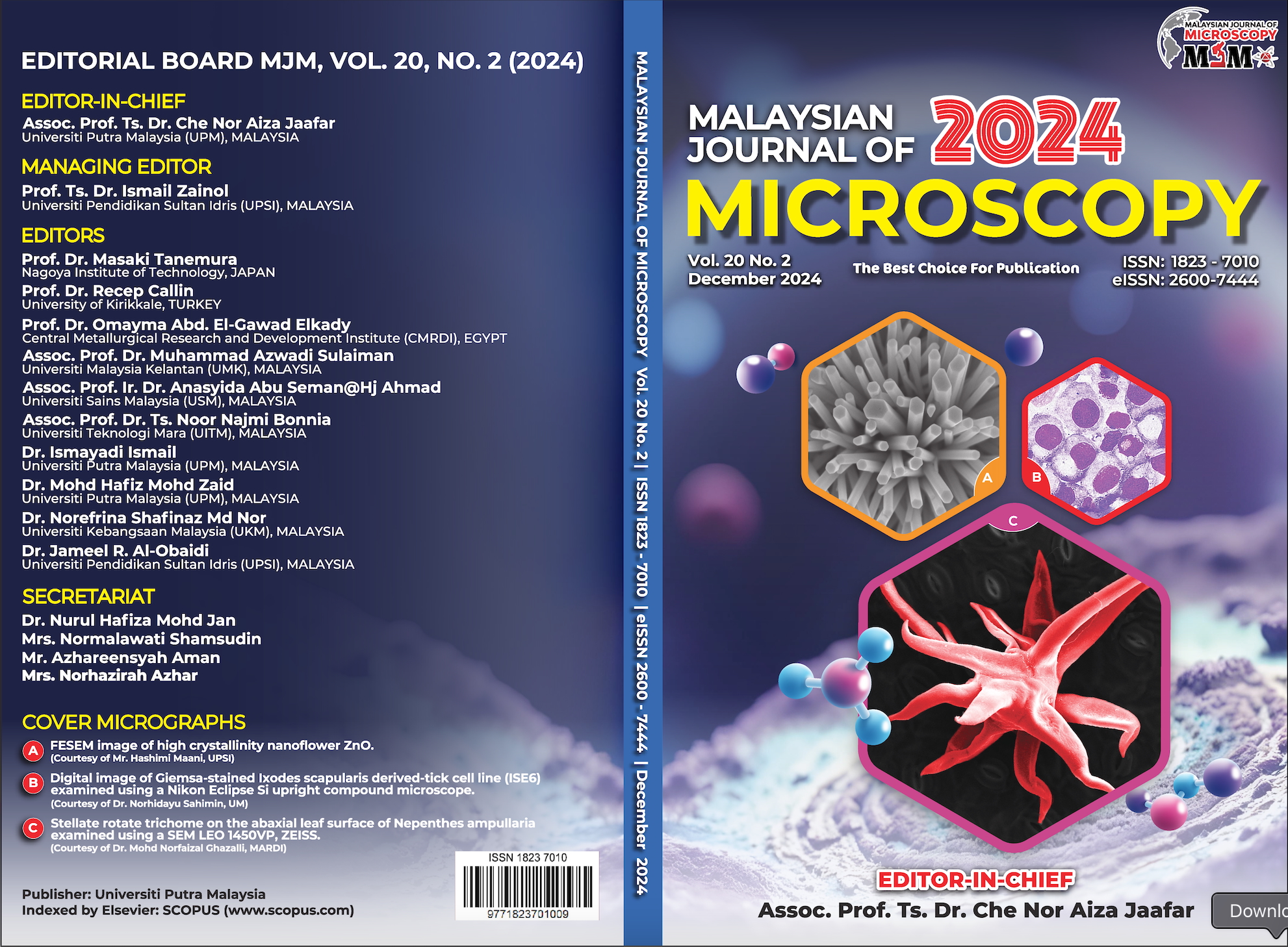POLYHYDROXYALKANOATE (PHA)/NANO-CALCIUM PHOSPHATE (nCAP)/CHITOSAN BIOCOMPOSITE FOR BONE REGENERATION: DEGRADATION, BIOACTIVITY AND CYTOTOXICITY EVALUATION
Abstract
Due to an ageing culture, bone defects and fractures are becoming serious concerns to human health and quality of life. Natural polyhydroxyalkanoate (PHA) biopolymers are biodegradable plastics and are receiving great attention in medical applications. However, PHA has several weaknesses such as low mechanical properties and poor biological properties like less apatite growth on PHA. Bioceramic was combined with PHA to enhance its bone-related properties, which resulted in gains in compressive elastic modulus, maximum stress, and osteoblast responses, such as cell growth and alkaline phosphate activity. PHAs have been found in medical applications due to their compatibility with the body without any adverse effects. In this work, PHA was reinforced with nanocalcium phosphate (n-CaP) and chitosan (CH) to improve the ability and promote bone formation and can also act as natural carriers for growth factors and antimicrobial resistance. Simulated body fluid (SBF) and cytotoxicity of PHA and PHA/n-CaP/CH composites were investigated to determine the biocompatibility properties. SBF results show that an apatite layer with a Ca/P ratio of 1.51-1.64 was formed on the surface of the composites after 28 days of immersion via scanning electron microscopy (SEM-EDX) examination. The cytotoxicity test has revealed that all samples have no hazardous effects towards the osteoblast cell. Thus, cell proliferation appears to be doubled in composites with 3wt% of n-CaP, surpassing the established standard. Thus, the biological activity of PHA/n-CaP/CH composites appears to be better than pure PHA. PHA and PHA/n-CaP/CH composites can be potential bone graft substitutes for implant applications.


